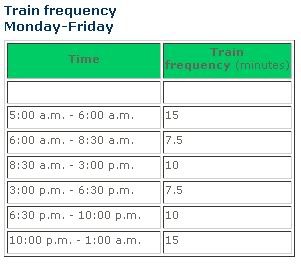Quote:
|
One thing I have noticed about US cities is that they will build this large elaborate LRT/subway systems and then rune them every 12 minutes off peak and every 6 minutes peak..................that's horrible service.
|
That (6 minute peak, 12 minute off peak) is indeed pretty poor service, but many of them actually run LESS FREQUENTLY than that.
----------------------------
Seattle:
-To be fair, eventually service should be much more frequent, especially from ID Station north, where 2 or even 3 routes are supposed to interline. An informative read on what eventual service frequencies might be like is
Train Frequency and the Downtown Tunnel on Seattle Transit Blog. I doubt the section south of downtown will ever have better than 6 minute service though, with all the at-grade crossings.

-------------------------
Phoenix:
http://www.valleymetro.org/schedules...ice=3317&sort=
12-minute peak, Monday-Friday
20-minute very early morning, and after about 8pm
---------------------------
Salt Lake City:
http://www.rideuta.com/ridingUTA/sch...Schedules.aspx
Routes 701, 702
15-minute peak (they do interline for a distance, so effective peak frequency of 7.5 minutes along that distance). Still not very good.
----------------------------
Houston:




